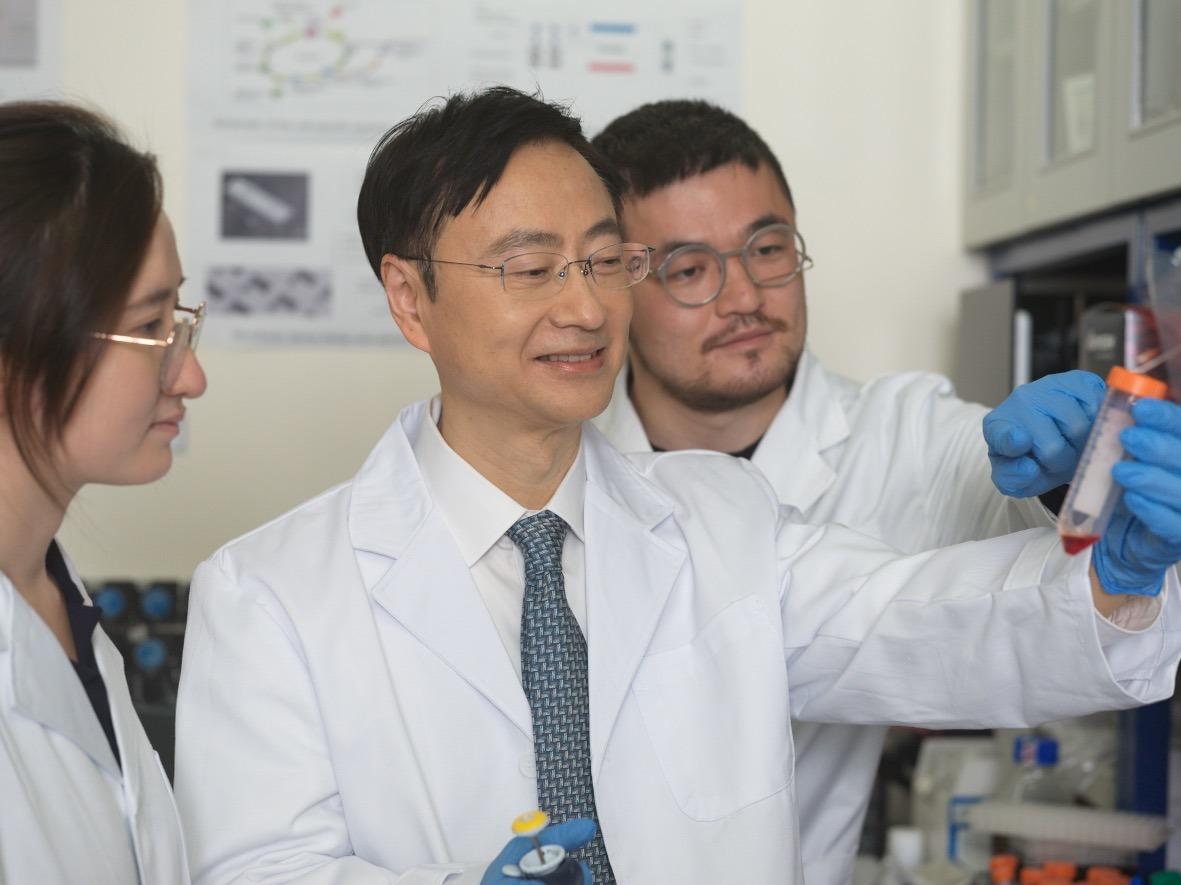 This undated photo shows Jia Wei, Acting Dean and Chair Professor in Chinese Medicine and Systems Biology of the School of Chinese Medicine at the Hong Kong Baptist University, presenting research results showing that hyodeoxycholic acid, a bile acid generated in the human intestine, offers a strong therapeutic potential for non-alcoholic fatty liver disease. (PHOTO PROVIDED TO CHINA DAILY)
This undated photo shows Jia Wei, Acting Dean and Chair Professor in Chinese Medicine and Systems Biology of the School of Chinese Medicine at the Hong Kong Baptist University, presenting research results showing that hyodeoxycholic acid, a bile acid generated in the human intestine, offers a strong therapeutic potential for non-alcoholic fatty liver disease. (PHOTO PROVIDED TO CHINA DAILY)
HONG KONG - A research led by Hong Kong Baptist University has discovered that a bile acid can reduce fat build-up and inflammation in the liver, showing a strong therapeutic potential for non-alcoholic fatty liver disease (NAFLD).
The research, led by Jia Wei, Acting Dean and Chair Professor in Chinese Medicine and Systems Biology of the School of Chinese Medicine at HKBU, showed that hyodeoxycholic acid (HDCA), a bile acid generated in the human intestine, offers promising potential in providing a therapeutic drug for NAFLD.
“Our research is a significant stride forward in understanding the pathophysiology of NAFLD, and it offers a potential new avenue for therapeutic intervention,” Jia said.
The research showed that hyodeoxycholic acid works by reshaping the population of beneficial gut bacteria, which affects metabolic interactions between the gut and the liver, highlighting the critical role of gut health in liver disease
The research showed that hyodeoxycholic acid works by reshaping the population of beneficial gut bacteria, which affects metabolic interactions between the gut and the liver, highlighting the critical role of gut health in liver disease.
ALSO READ: HKBU: Licorice compound can inhibit pancreatic cancer
The research findings have been published in the renowned scientific journal Cell Metabolism and HKBU researchers will coordinate a phase I and II clinical trial in the Chinese mainland to evaluate the safety and efficacy of HDCA for patients with fatty liver disease and type 2 diabetes.
NAFLD is a leading cause of chronic liver disease, characterized by the build-up of excessive fat in liver cells that is not caused by alcohol consumption.
Its global prevalence has been increasing with a meta-analysis in 2022 estimating that 32 percent of the adult population is affected by NAFLD.
 This undated photo shows Jia Wei (center), Acting Dean and Chair Professor in Chinese Medicine and Systems Biology of the School of Chinese Medicine at the Hong Kong Baptist University, conducting lab tests with his research team. (PHOTO PROVIDED TO CHINA DAILY)
This undated photo shows Jia Wei (center), Acting Dean and Chair Professor in Chinese Medicine and Systems Biology of the School of Chinese Medicine at the Hong Kong Baptist University, conducting lab tests with his research team. (PHOTO PROVIDED TO CHINA DAILY)
Some people with NAFLD can develop non-alcoholic steatohepatitis, which is marked by liver inflammation and may progress to cirrhosis and liver failure. Currently, there are no therapeutic drugs available for sale on the market for non-alcoholic steatohepatitis.
“The study underscores the crucial role of the gut-liver metabolic axis in disease management. We hope that the research findings on HDCA and the clinical trial to be conducted in the mainland will provide more insights into the treatment of fatty liver disease and non-alcoholic steatohepatitis,” Jia said.
READ MORE: HKBU team discovers new species of box jellyfish
Jia, an internationally renowned expert in metabolomics, has also led a research project investigating the molecular connections between metabolic-associated fatty liver disease and type 2 diabetes, with a specific focus on host-gut microbiota interactions. The project has been awarded over HK$7.2 million ($921,000) in funding under the Research Grants Council.


